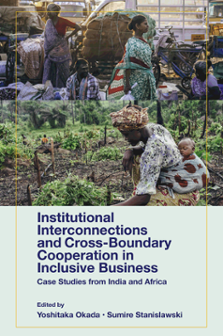
Index
Institutional Interconnections and Cross-Boundary Cooperation in Inclusive Business
ISBN: 978-1-80117-213-4, eISBN: 978-1-80117-212-7
Publication date: 5 November 2021
Citation
(2021), "Index", Okada, Y. and Stanislawski, S. (Ed.) Institutional Interconnections and Cross-Boundary Cooperation in Inclusive Business, Emerald Publishing Limited, Leeds, pp. 241-244. https://doi.org/10.1108/978-1-80117-212-720211012
Publisher
:Emerald Publishing Limited
Copyright © 2022 Yoshitaka Okada and Sumire Stanislawski. Published under exclusive licence by Emerald Publishing Limited
INDEX
- Prelims
- Chapter 1 Introduction
- Chapter 2 Institutional Interconnections and Cross-Boundary Cooperation in Inclusive Business: Analytical Framework
- Chapter 3 Dynamics of a Synchronized Business Model for Inclusive Business
- Chapter 4 Delegated Business Model for Stimulating Self-Initiating Behavior of the Rural Poor in Tanzania
- Chapter 5 Pivoting to Adapt for Inclusive Business Sustainability in India
- Chapter 6 Scaling Compassion, Blurring Boundaries: Partners and Cooperation in Aravind Eye Care System
- Chapter 7 Aligning Partner Interests: Challenges in Delivering Potable Water in India through an Inclusive Business Model—Waterlife India Pvt. Ltd.
- Chapter 8 Local Agro-Processing and Inclusive Business by Ghana Nuts Company and Homefoods Processing and Cannery
- Chapter 9 Discussion and Conclusion
- References
- Appendix
- Index